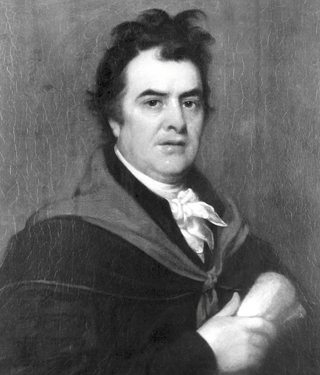It Happened Here: Dr. David Hosack
A NewYork-Presbyterian doctor and a historic figure in his own right, Hosack served as Alexander Hamilton’s personal physician.
We all know the story of Alexander Hamilton and, thanks to playwright and composer Lin-Manuel Miranda and the Broadway smash bearing Hamilton’s name, the score. On July 11, 1804, Hamilton was fatally wounded in a duel by his longtime rival Aaron Burr, or, in Miranda’s unforgettable lyrics, the “damn fool that shot him.”
But someone else was at the duel in Weehawken, New Jersey — Dr. David Hosack, a former Columbia College student who served for years as Hamilton’s — and Burr’s — family doctor. He studied under New York Hospital’s founder and George Washington’s personal physician, Samuel Bard, and was also on hand for 19-year-old Philip Hamilton’s duel in 1801, where Philip suffered a mortal wound on the same grounds where his father would be shot three years later.
“It was during the yellow fever epidemic of 1798 that Dr. Hosack became closer with Hamilton,” says Lisa Mix, head of Medical Center Archives at NewYork-Presbyterian/Weill Cornell Medicine, “because Hamilton’s son Philip almost succumbed to the yellow fever epidemic. And David Hosack saved his life.”
In addition to witnessing Hamilton’s death, Dr. Hosack was a historic figure in his own right. An educator and bon vivant who earned upward of $10,000 a year — a princely sum in those days — he hosted salons in his well-appointed townhouse and entertained the day’s leading intellectuals and artists, including novelist Washington Irving, poet William Cullen Bryant and Samuel Morse, a painter and the inventor of the telegraph.

Dr. David Hosack
Dr. Hosack was a botanist, too, who studied plants and their medicinal qualities, and founded the 20-acre Elgin Botanic Garden, the first public botanical garden in New York state and whose site is now occupied by the landmark Rockefeller Center. He also established a “Lying-In Hospital” for women and their newborn children, to which Hamilton donated. Burr and William Bayard, the director of Bank of New York and in whose house Hamilton died, were members of The Society of the New York Hospital, too.
“When Hosack was raising money for the Lying-In Hospital, Hamilton was one of the top supporters,” says Mix. “He gave $50, which doesn’t sound like a lot now, but that was the top level of donor in 1799. … And after Hamilton’s signature, it does say paid. They don’t all say paid. So, we know that he did actually pay.”
Dr. Hosack became a professor of botany at Columbia College and later served as a professor of surgery and midwifery. But his connection to Hamilton and Burr didn’t end with Hamilton’s death. Hamilton’s grandson, Dr. Allan McLane Hamilton, graduated from what is today’s Columbia University’s College of Physicians and Surgeons, became a neurologist and co-founded the New York Psychiatrical Society. In 1910, he wrote the book, The Intimate Life of Alexander Hamilton. Meanwhile, Dr. Hosack’s son, Alexander, became a physician and took care of Burr in his final years, which were spent in relative obscurity. Burr suffered a stroke in 1834, and died two years later in a boardinghouse on Staten Island.
